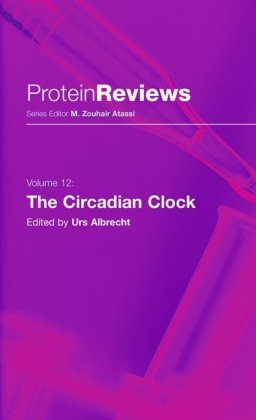مشاهده سبد خرید “Molecular Defects in Cardiovascular Disease 2011” به سبد خرید شما اضافه شد.
| تعداد صفحهها |
300 |
|---|---|
| نوع فایل |
|
| حجم |
9 Mb |
| سال انتشار |
2009 |
89,000 تومان
دانلود ۳۰.۰۰۰ کتاب پزشکی فقط با قیمت یک کتاب و ۹۹ هزار تومان !
توضیحات
من که برای ویرایش این جلد دعوت شدهام، میخواهم از این فرصت استفاده کنم و نظراتی را درباره جنبههای مختلف ساعتها و ریتمهای شبانهروزی گردآوری کنم. اگرچه بیشتر نقل قولهای این جلد بر ساعتهای شبانهروزی پستانداران متمرکز است، استدلال تاریخی و بخش ساعتهای مقایسهای اهمیت بسیاری از موجودات دیگر را در رمزگشایی مکانیسمها و اصول زیستشناسی شبانهروزی نشان میدهد. ریتمهای شبانهروزی قرنها مورد مطالعه قرار گرفتهاند، اما اخیراً درک جامعی از این فرآیند پدیدار شده است. این پژوهش ساعات روزانه پدیده های عرفانی را به سطح مکانیکی رسانده است. زنجیره های مولکولی رویدادها می توانند پدیده ها را با دقت قابل توجهی توصیف کنند. با این حال، مدلهای فعلی ساعات کار روزانه هنوز ابتدایی هستند. این به دلیل نقص در مکانیسمهای شناساییشده نیست، بلکه به این دلیل است که هیچ فرآیند کشفنشدهای در کمک به ریتم شبانهروزی وجود ندارد. به عنوان مثال، می دانیم که مکانیسم کلی شبانه روزی در تمام بافت های مردانه به طور یکسان تنظیم نمی شود. از این رو، برای به دست آوردن درک کامل از ریتم های سریانی در سطح سیستم، چیزهای زیادی باید کشف شود. در این راستا، فناوری در سالهای گذشته با سرعت بالایی پیشرفت کرده و دادههایی را در اختیار ما قرار داده است که پیچیدگی بسیار زیاد تنظیم فرآیندهای فیزیولوژیکی موجودات زنده را نشان میدهد. برای مقابله با این اطلاعات، ادغام نتایج به کمک رایانه از اهمیت بالایی برخوردار است تا مفاهیم جدیدی را پوشش دهد که در نهایت نیاز به آزمایش تجربی دارند.
توضیحات(انگلیسی)
With the invitation to edit this volume, I wanted to take the opportunity to assemble reviews on different aspects of circadian clocks and rhythms. Although most c- tributions in this volume focus on mammalian circadian clocks, the historical int- duction and comparative clocks section illustrate the importance of various other organisms in deciphering the mechanisms and principles of circadian biology. Circadian rhythms have been studied for centuries, but only recently, a mole- lar understanding of this process has emerged. This has taken research on circadian clocks from mystic phenomenology to a mechanistic level; chains of molecular events can describe phenomena with remarkable accuracy. Nevertheless, current models of the functioning of circadian clocks are still rudimentary. This is not due to the faultiness of discovered mechanisms, but due to the lack of undiscovered processes involved in contributing to circadian rhythmicity. We know for example, that the general circadian mechanism is not regulated equally in all tissues of m- mals. Hence, a lot still needs to be discovered to get a full understanding of cir- dian rhythms at the systems level. In this respect, technology has advanced at high speed in the last years and provided us with data illustrating the sheer complexity of regulation of physiological processes in organisms. To handle this information, computer aided integration of the results is of utmost importance in order to d- cover novel concepts that ultimately need to be tested experimentally.




